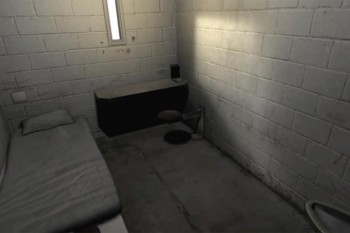2017 Summer Institute: Session 2 – Youth in Solitary Confinement

By Eunice Revis, Juvenile Justice Fellow
On July 24, 2017, the Campaign for Youth Justice Fellows hosted the second session of the 2017 Summer Institute for interns and fellows from various juvenile justice organizations to discuss the effects of solitary confinement on children. The Campaign was thrilled to have Jenny Lutz, the Campaign Manager for the Stop Solitary for Kids Campaign, and staff attorney at the Center for Children’s Law and Policy (CCLP) - an organization focused on eliminating racial and ethnic disparities in the juvenile justice system, reducing the unnecessary and inappropriate incarceration of children, and eliminating dangerous and inhumane practices for youth in custody.
Lutz led an interactive discussion on solitary confinement and the misconception that it is only used for the most “dangerous” offenders. She supported her claim with evidence that most children, in fact, are placed in solitary confinement for nonviolent offenses. Ultimately resurfacing how cruel and inhumane the concept is, she brought to light the benefit of intervention as an alternative to isolation. She referred to the tactic as unethical and counterproductive, reminding attendees of the physical and mental damage the practice leads to. Lutz followed up with a reference to Kalief Browder, who committed suicide less than a year after his release from Rikers Island - the key jail complex for New York City. Browder was arrested at the age of 16 for a non-violent crime (his case was eventually dismissed) and was placed in solitary confinement for up to 300 days while at the facility. Due to the psychological and emotional harm, he took his life shortly after returning to society. He was only 22. Like Browder, many children result in self-harm and suicide following solitary confinement. Studies show that 50% of youth who commit suicide in correctional facilities do so in solitary confinement.
Lutz challenged participants in the meeting to take the necessary steps to reform the use of juvenile solitary confinement and encourage officials to implement more safe and just practices in their facilities. The dialogue provided the perfect environment for change agents seeking to alter the juvenile justice system. Conversations like these bring us one step closer to improving the safety of children in correctional facilities.

